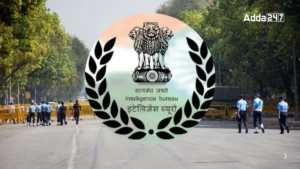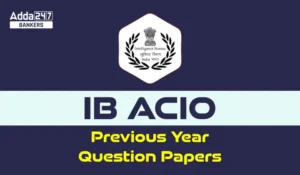Directions (1-10): Read the following passage carefully and answer the questions given below it. Certain words are given in bold to help you locate them while answering some of the questions.
THE crisis created by non-performing assets (NPAs) on the balance sheets of commercial banks, especially those in the public sector, does not go away. It only intensifies. An environment that triggered large inflows of foreign capital and a surge in credit after 2003 encouraged banks to explore new areas and terms of lending, which are responsible for the large exposures that are now turning bad. Having encouraged that environment with its policies, the government pretended that the problem was not serious enough to warrant emergency action. The reason was that it wanted to do the impossible: resolve a big problem with little money. But now time seems to be running out.
Data for all banks (public and private) relating to December 2016, compiled by Care Ratings (reported in The Indian Express, February 20) point to a 59.3 per cent increase in NPAs over the previous 12 months to Rs.6,97,409 crore. That amounts to 9.3 per cent of their advances, compared with an NPA to advances ratio of 3.5 per cent at the end of 2012. The annual increment in the NPA ratio, which stood at around one-half of a percentage point in the years ending December 2013 and December 2014, rose rather sharply to 1.6 percentage points and 3.3 percentage points respectively in the years ending December 2015 and December 2016.
One reason for the acceleration in NPA growth is the more stringent conditions imposed in 2015 regarding recognition of assets as non-performing. Realising that postponing bad debt recognition could result in the accumulation of stressed assets in bank balance sheets sufficient to create a systemic problem, the Reserve Bank of India (RBI) instituted an asset quality review in 2015 to reclassify assets and reverse the practice of treating all restructured assets as standard assets.
Once stressed assets are formally recognised as non-performing, the requisite provisions are set aside at the expense of short-term profitability, the banks are recapitalised, and credit growth will see a revival, it was argued. The problem is that this is not happening because a large number of projects to which money had been lent during the boom period that preceded 2011-12, when investment rates rose sharply, were not ones to which the banking system should have been exposed. As these projects are all entering the period when they find themselves unable to service their debt, loans are turning non-performing in quick succession. This trail of defaults is ensuring that the NPA ratio is not stabilising, once assets misclassified as restructured and standard are recognised as non-performing, as the RBI expected it would. More assets are turning bad.
As the Economic Survey 2016-17 recognised, in normal circumstances this would have threatened the banks concerned with insolvency, perhaps triggered a run on the banks, forced their closure and even precipitated a systemic crisis. India is fortunate that a large part of its banking system is owned by the government. According to the Care Ratings figures referred to earlier, 24 PSBs accounted for 88.2 per cent of the total NPAs with the public and private banks. Their NPA ratio stood at 11 per cent at the end of 2016, indicating that they have a disproportionate share of bad loans in total advances. According to the Survey, since there is the belief that these banks have the backing of the government, which will keep them afloat, the bad loan problem has not, as yet, become a systemic crisis.
Q1. Which of the following is/are the possible reasons behind NPAs crisis?
(I)Large inflows of foreign capital in the banking sector
(II)An upsurge in credit after 2003 that encouraged banks to explore new areas and terms of lending
(III)The intervention by the government with its policies to encourage the banks to broaden its lending scope
(a)Only (I) is correct
(b)Only (III) is correct
(c)Both (I) and (II) are correct
(d)Both (II) and (III) are correct
(e)All are correct
Q2. Why according to the passage RBI initiated an asset quality review in 2015?
(I) To reclassify assets and reverse the practice of treating all restructured assets as standard assets.
(II) To avoid the accumulation of stressed assets in bank balance sheets.
(III) To make transfers to the private sector through a roundabout scheme that helps write off their debt.
(a)Only (I) is correct
(b)Only (II) is correct
(c)Both (I) and (II) are correct
(d)Both (II) and (III) are correct
(e)All are correct
Q3. Which of the following statements is TRUE in context of the passage?
(a) Care Ratings point to a 59.3 per cent increase in NPAs over the previous 12 months to Rs.6,97,409 crore of public sector banks.
(b) According to the Care Ratings figures, 24 PSBs accounted for 88.2 per cent of the total NPAs with the public and private banks.
(c) The NPA ratio of public and private sector banks stood at 11 per cent at the end of 2015.
(d) The annual increment in the NPA ratio which was very nominal in the year ending December 2013 rose sharply to 3.3 percentage points in the year ending December 2015.
(e)None is true.
Q4. What does the author mean by the statement “India is fortunate that a large part of its banking system is owned by the government”?
(I)Indian Banks are fortunate that the government has the control over all their functions which help in dealing with systematic crisis.
(II)Indian Banks which are under the control of government are able to sustain even the critical crisis whereas in normal circumstances this would have threatened the banks concerned with insolvency.
(III)Indian Banks have recovered better during systematic crisis than other banks in the world as the policies implemented by the government have performed positively.
(a)Only (I) is correct
(b)Only (II) is correct
(c)Both (I) and (II) are correct
(d)Both (II) and (III) are correct
(e)All are correct
Q5. Which of the following is the most appropriate title of the passage?
(a)Illusions of a recovery
(b)Crisis of Non Performing Assets
(c)Wicked loans and bad banks
(d)Reclassification of restructured assets
(e)NPAs and Care Ratings Data
Q6. What according to the passage could be the reason behind instability of NPA ratio?
(I)As the requisite provisions are set aside at the expense of short-term profitability
(II)A large number of projects to which money had been lent during the boom period are unable to service their debt
(III)A trail of defaults ensuring loans are turning non-performing in quick succession
(a)Only (I) is correct
(b)Both (I) and (II) are correct
(c)Both (II) and (III) are correct
(d)Both (I) and (III) are correct
(e)All are correct
Direction (7-8): Choose the word/group of words which is most similar in meaning to the word/group of words printed in bold as used in passage.
Q7. Warrant
(a)Document
(b)Vindicate
(c)Verdict
(d)Clause
(e)Insurance
Q8. Precipitate
(a)Reckless
(b)Surprising
(c)Willful
(d)Expedite
(e)Excessive
Direction (9-10): Choose the word/group of words which is most opposite in meaning to the word/group of words printed in bold as used in passage.
Q9. Stringent
(a)Confining
(b)Somber
(c)Poignant
(d)Unrelenting
(e)Flexible
Q10. Requisite
(a)Indispensable
(b)Stipulation
(c)Peripheral
(d)Prepossession
(e)Tolerable
Direction (11-15): Which of the following phrases (a), (b), (c) and (d) given below each sentence should replace the phrase printed in bold letters to make the sentence grammatically correct? If the sentence is correct as it is, mark (e) i.e., “No correction required” as the answer.
Q11. The significance of Modi’s visit to Israel, as the first Indian Prime Minister there, can be of great historical importance.
(a) is a great historical importance
(b)was of great historical importance
(c)historically had a great importance
(d)has a great importance historically
(e)No correction required
Q12. Seven decades ago, Nehru first articulated his vision of China and India holding to assure the togetherness of the future of Asia.
(a)holding togetherness and assuring
(b)to hold together assuring
(c)holding together to assure
(d)in order to hold together and assure
(e)No correction required
Q13. Scientists have developed a hypoallergenic, breathable sensor that can be worn on the skin continuously for a week without discomfort, and may pave the way for wearable devices that can monitor health continuously over a long period.
(a)which could be worn over the skin continuously
(b)that will wear on the skin continuously
(c)which can wear continuously on the skin
(d)that is worn over the skin continuously
(e)No correction required
Q14. Addressing the session, Mr. Puri said China has already lifted hundreds of millions of people out of poverty and India too have done quite well in recent.
(a)has too done well quite recently
(b)too has done quite well recently
(c)had recently done quite well
(d)has been doing quite well recently
(e)No correction required
Q15. Expressing concern at the growing gap over the overarching goals of the bilateral Indo-US defence relationship, a powerful Senate Committee has asked Pentagon to work with New Delhi in cyber and space operating domain.
(a)at the growing gap among
(b)on the gap growing with
(c)over the growing gap between
(d)on the grown up gap between
(e)No correction required
SOLUTIONS:
S1. Ans. (e)
Sol. Refer the first paragraph of the passage, “An environment that triggered large inflows of foreign capital and a surge in credit after 2003 encouraged banks to explore new areas and terms of lending, which are responsible for the large exposures that are now turning bad. Having encouraged that environment with its policies, the government pretended that the problem was not serious enough to warrant emergency action.” Hence all three statements are the possible reasons behind the crisis of NPAs.
S2. Ans. (c)
Sol. Refer the third paragraph of the passage, “Realising that postponing bad debt recognition could result in the accumulation of stressed assets in bank balance sheets sufficient to create a systemic problem, the Reserve Bank of India (RBI) instituted an asset quality review in 2015 to reclassify assets and reverse the practice of treating all restructured assets as standard assets.” Hence both the statements (I) and (II) are correct in context of the passage.
S3. Ans. (b)
Sol. Refer the last paragraph of the passage, “According to the Care Ratings figures referred to earlier, 24 PSBs accounted for 88.2 per cent of the total NPAs with the public and private banks.” Hence statement (b) is true in context of the passage.
S4. Ans. (b)
Sol. Refer the last paragraph of the passage, “As the Economic Survey 2016-17 recognised, in normal circumstances this would have threatened the banks concerned with insolvency, perhaps triggered a run on the banks, forced their closure and even precipitated a systemic crisis. India is fortunate that a large part of its banking system is owned by the government.” Hence it can be inferred from the passage that the author is trying to figure that with the backing of the government Indian banks are able to sustain even the adverse conditions. Hence only statement (II) is correct in context of the passage.
S5. Ans. (c)
Sol. “Wicked loans and bad banks” is the most appropriate title of the passage as “Wicked” and “bad” the adjectives added to loans and Indian banks portray the chinks in our centuries old banking system, which lacks nerve to crack a whip on defaulting bulls. Hence (c) is the correct option.
S6. Ans. (c)
Sol. Refer the second last paragraph of the passage, “The problem is that this is not happening because a large number of projects to which money had been lent during the boom period that preceded 2011-12, when investment rates rose sharply, were not ones to which the banking system should have been exposed. As these projects are all entering the period when they find themselves unable to service their debt, loans are turning non-performing in quick succession. This trail of defaults is ensuring that the NPA ratio is not stabilizing…” Hence both statements (II) and (III) are correct in context of the passage.
S7. Ans. (b)
Sol. Warrant means justify or necessitate (a course of action). Vindicate means show or prove to be right, reasonable, or justified. Hence both are similar in meanings.
S8. Ans. (d)
Sol. Precipitate means cause (an event or situation, typically one that is undesirable) to happen suddenly, unexpectedly, or prematurely. Expedite means make (an action or process) happen sooner or be accomplished more quickly. Hence both are similar in meanings.
S9. Ans. (e)
Sol. Stringent means (of regulations, requirements, or conditions) strict, precise, and exacting. Hence “flexible” is the word most opposite in meaning to it.
Somber means having or conveying a feeling of deep seriousness and sadness.
Poignant means evoking a keen sense of sadness or regret.
Unrelenting means not giving way to kindness or compassion.
S10. Ans. (c)
Sol. Requisite means made necessary by particular circumstances or regulations. Peripheral means of secondary or minor importance; marginal. Hence both are opposite in meanings.
Prepossession means a prejudice or a preconceived idea about something.
Stipulation means a condition or requirement that is specified or demanded as part of an agreement.
S11. Ans. (b)
Sol. “was of great historical importance” is the correct phrase to make the sentence grammatically correct. It is to be noted that the sentence is in Past Tense. If we go by options, all phrases except option (b) are not in correct grammar structure. Hence (b) is the correct choice.
S12. Ans. (c)
Sol. “holding together to assure” is the correct phrase to make the sentence grammatically correct as the “holding together” is the correct phrasal verb which means remain or cause to remain united. Other options are in accordance to correct grammar structure.
S13. Ans. (e)
Sol. The given sentence is grammatically correct. “that can be worn” is the correct phrase as the sentence is in Present Tense and it is talking about some new invention in the field of science and technology. Hence (e) is the correct choice.
S14. Ans. (b)
Sol. “too has done quite well recently” is the correct phrase to make the sentence grammatically correct. It is to be noted that both “China” and “India” are used in Singular number; so “has” will be used in place of “have”.
S15. Ans. (c)
Sol. “over the growing gap between” is the correct phrase to make the sentence grammatically correct as “expressing concern over something” is the correct phrasal usage. Hence (c) is the correct option.



 IB ACIO Vacancy 2025 Notification Out, ग...
IB ACIO Vacancy 2025 Notification Out, ग...
 IB ACIO Previous Year Papers in Hindi: I...
IB ACIO Previous Year Papers in Hindi: I...
 18th July Daily Current Affairs 2025: सभ...
18th July Daily Current Affairs 2025: सभ...

